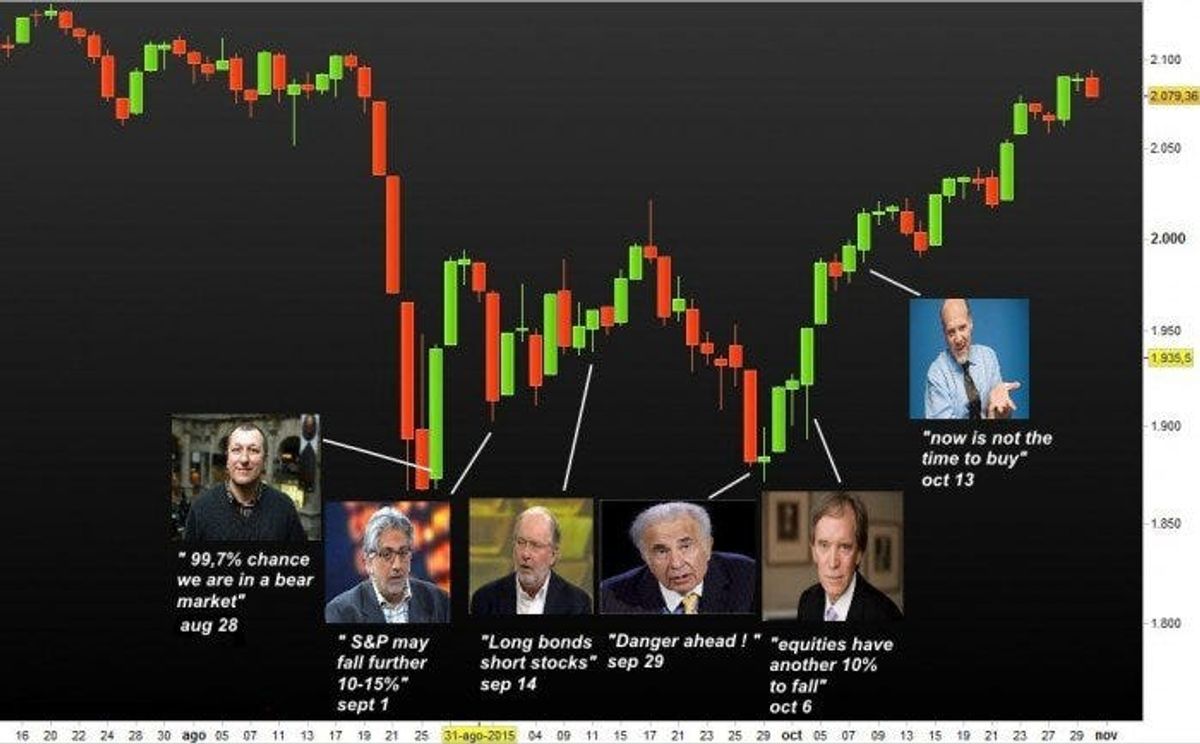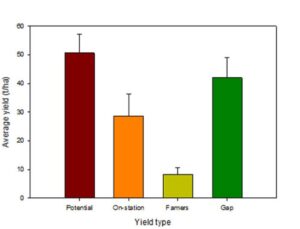In the ever-shifting landscape of the stock market, understanding the ebb and flow of bull and bear markets is crucial for investors aiming to thrive. This article delves into the characteristics of these market conditions, offers strategic advice for capitalizing on bull markets, and presents defensive tactics for weathering bear markets. By equipping investors with knowledge on maximizing gains and securing profits, as well as adapting to market cycles for long-term success, this guide aims to provide a comprehensive roadmap for navigating the complexities of market dynamics.
Key Takeaways
- Recognize the indicators of bull and bear markets to tailor investment strategies for each phase, enhancing the potential for success.
- In bull markets, employ growth-oriented strategies, maintain a buy-and-hold philosophy, and explore sector-specific opportunities.
- During bear markets, prioritize capital preservation, diversify to manage risk, and seek out safe-haven assets to mitigate losses.
- Maximize gains by timing market transactions effectively, and secure profits by avoiding overvaluation and speculative risks.
- Adapt to market cycles by balancing short-term tactics with long-term goals, and learn from past market cycles to inform future decisions.
Understanding Market Dynamics: Bull vs. Bear

Characteristics of Bull Markets
A bull market is typically marked by a sustained increase in stock prices, often defined by a rise of 20% or more from recent lows. This period is characterized by a strong economy, low unemployment, and high corporate earnings, fostering high investor confidence and increased buying activity.
Investor optimism is a key driver during these times, as positive economic indicators and events such as technological advancements, mergers, and government policies can further fuel market growth. The following points highlight the essence of a bull market:
- Sustained increase in stock prices
- Strong economic indicators
- High investor confidence and buying activity
- Association with economic growth and low unemployment
- Positive impact from news events and government stimulus
In a bull market, the pervasive sentiment is one of optimism, where the expectation of continued economic strength encourages more investment and risk-taking.
Understanding these characteristics helps investors recognize the potential for growth and the opportunity to capitalize on the upward momentum of the market.
Characteristics of Bear Markets
A bear market is often triggered by widespread investor fear and is characterized by a prolonged period of falling stock prices. Investor confidence decreases, leading to increased selling pressure. This can be a result of various factors, including economic downturns, financial crises, or geopolitical tensions.
- Economic downturns
- Financial crises
- Geopolitical tensions
- Negative news events
- Negative economic data
During these times, the impact on the economy can be significant, reducing consumer spending, company investment, and overall growth. Long periods of market collapse can lead to job losses, bankruptcies, and financial instability.
In navigating a bear market, it is crucial to adjust strategies and make informed decisions based on current market sentiment, leveraging insights on banking, brokerages, and investments.
Understanding these characteristics helps investors identify strong stocks and employ tactics such as diversification and technical analysis to manage risk effectively.
Comparing Market Trends and Indicators
When navigating the financial markets, understanding the underlying trends and indicators is crucial for making informed decisions. Comparing the characteristics of bull and bear markets can reveal much about the current economic climate and investor sentiment. In a bull market, we typically see an upward trend in stock prices, driven by strong economic indicators like GDP growth, consumer spending, and business investment. Conversely, a bear market is characterized by a downward trend and is often accompanied by economic contraction and higher unemployment rates.
Investor sentiment is a key factor that can influence market dynamics. Optimism fuels bull markets, while pessimism pervades bear markets. Sentiment indicators, such as consumer confidence surveys and sentiment indexes, offer valuable insights into the prevailing mood of the market.
It’s essential to recognize that market trends are not only shaped by economic data but also by technological developments, business innovation, and global trade agreements, which can all contribute to bullish or bearish sentiment.
Understanding these differences and monitoring market indicators can help investors identify potential opportunities and risks, allowing for smarter investment strategies and better performance in both bull and bear markets.
Strategic Investment Approaches for Bull Markets

Growth-Oriented Investment Strategies
In the midst of a bull market, investors often favor growth-oriented strategies. These strategies typically involve investing in sectors that are expected to outperform the market due to economic expansion. For instance, sectors like technology, industrials, or consumer discretionary are often targeted for their potential to yield significant returns as consumer spending and investment surge.
Reallocating investments towards these cyclical sectors can be a smart move, especially when paired with maintaining exposure to defensive assets. This combination provides a balance between seeking growth and having a cushion against potential setbacks. It’s important to note that while growth stocks in these areas can offer substantial rewards, they require careful selection and timing to maximize returns.
- Bull Markets: Focus on growth stocks and broad market indices.
- Bear Markets: Shift towards capital preservation and defensive positioning.
- Recovery Markets: Transition to growth strategies by reallocating investments.
Financial tips: Avoid PMI with a 20% down payment, seek lower interest rates, and make larger down payments to tailor mortgage terms for financial stability.
The Buy-and-Hold Philosophy
The buy-and-hold philosophy is a testament to the power of patience in the investment world. Investors who adhere to this strategy often outperform those attempting to time the market. This approach emphasizes the importance of staying invested through market fluctuations to benefit from long-term growth and the compounding of earnings and dividends.
The essence of buy-and-hold is to maintain a steady course, resisting the urge to react to short-term market movements.
While this strategy may seem straightforward, it requires discipline and a long-term focus. Investors should be prepared for the inevitable ups and downs of the market, knowing that a bull market will eventually prevail. Diversification is also key, spreading investments across various sectors and asset classes to mitigate risks without forgoing the potential advantages of a bull market.
Here are some considerations for implementing a buy-and-hold strategy:
- Recognize the potential for emotional responses during bear markets and commit to a long-term perspective.
- Ensure your portfolio is well-diversified to withstand market volatility.
- Remember that the economy has historically recovered over time, suggesting that patience can lead to appreciation of holdings.
Sector-Specific Opportunities
In the midst of a bull market, diversifying across various sectors is crucial for balancing risk and reward. Sectors such as technology, consumer discretionary, and financials often lead the charge due to heightened consumer spending and robust investment. By targeting growth stocks in these sectors, investors can potentially reap significant returns.
Economic indicators like GDP growth and consumer spending hint at the health of the economy and future market trends. These indicators, along with technological advancements and global trade developments, can foster bullish sentiment, thus elevating stock values.
While growth-oriented strategies are appealing, it’s important to maintain a mix of cyclical and defensive assets. This balance helps safeguard against potential downturns while the market’s recovery solidifies.
Here’s a snapshot of sectors that typically outperform during bull markets:
- Technology: Innovation drives growth.
- Consumer Discretionary: Spending surges as consumer confidence rises.
- Financials: Economic expansion benefits banking and financial services.
Defensive Tactics for Navigating Bear Markets

Capital Preservation Techniques
In the throes of a bear market, the primary goal for investors shifts from wealth accumulation to capital preservation. This defensive stance is crucial to safeguard investments against the erosive effects of prolonged market downturns. One effective technique is to diversify across various sectors and asset classes, a strategy that mitigates risks without forgoing potential gains.
Dividend stocks and bonds are another cornerstone of a capital preservation strategy. These assets can provide steady income and are often considered ideal for weathering bear markets. However, it is essential to conduct thorough research before selecting these investments to ensure they align with your risk tolerance and investment goals.
Shifting allocations towards defensive sectors such as utilities, consumer staples, or healthcare can also provide stability during market volatility.
While the allure of quick profits can be tempting, maintaining a long-term focus is vital for enduring the bear market’s challenges and positioning for recovery when market sentiment improves.
Diversification and Risk Management
In the face of a bear market, diversification is more than just a buzzword; it’s a shield against the volatility and unpredictability of a downturn. By spreading investments across various sectors and asset classes, you create a safety net that can catch you when individual stocks or sectors fall. This strategy is not just about avoiding losses; it’s about positioning yourself to capitalize when the market recovers.
Effective risk management is crucial for weathering the storm. It involves setting stop-loss orders to prevent significant losses and maintaining a balanced exposure to avoid being overly reliant on any single stock or sector. Here’s a simple list to keep in mind:
- Diversify across different sectors and asset classes.
- Set stop-loss orders to limit potential losses.
- Research and select stocks with growth potential.
- Regularly review and rebalance your portfolio to maintain the desired risk level.
Remember, the goal is to manage risk in a way that preserves your capital while still allowing for growth opportunities. It’s about finding the right balance between caution and optimism in a market that often tests both.
Identifying Safe-Haven Assets
In the midst of a bear market, identifying safe-haven assets is crucial for investors seeking to protect their portfolios from significant losses. Safe-haven assets are typically less volatile during market downturns and can provide a buffer against economic instability.
When considering safe-haven assets, it’s important to assess not only their historical performance but also their potential to maintain value in the face of various market conditions.
Some common safe-haven assets include:
- Gold and precious metals
- Government bonds
- Certain currencies (e.g., the US dollar, Swiss franc)
- Defensive stocks (utilities, consumer staples)
Each of these assets has unique characteristics that can contribute to their stability during economic turbulence. For instance, gold often retains value as it is seen as a store of wealth, while government bonds are backed by the issuing country’s ability to tax and generate revenue.
Maximizing Gains and Securing Profits

Timing the Market: When to Buy and Sell
The art of timing the market is often seen as a high-risk, high-reward strategy. It involves making calculated decisions on when to buy and sell assets to maximize profits. While it’s nearly impossible to consistently predict market tops and bottoms, there are certain indicators and psychological triggers that can guide investors.
Emotional attachment and confirmation bias can cloud judgment, making it difficult to sell during a bull market. However, it’s essential to recognize signs of market saturation, such as widespread buzz around assets like Bitcoin, which may signal a time to secure profits.
Developing a habit of consistently taking partial profits during a bull market can be a prudent approach to realizing gains.
Here are a few strategies to consider:
- Acknowledge and understand market cycles.
- Sell during a bull market to secure profits.
- Avoid speculative moves with your holdings at peak prices.
- Set and adhere to predetermined exit triggers.
Profit-Taking Strategies in a Bull Market
In the exuberance of a bull market, investors must remain vigilant to secure profits without succumbing to greed. A disciplined approach to profit-taking can ensure that gains are not eroded by sudden market downturns. Here are some strategies to consider:
- Set Profit Targets: Establish clear profit targets for each investment and sell a portion when these targets are met.
- Trailing Stop Losses: Implement trailing stop losses to protect gains. As the stock price climbs, the stop loss adjusts accordingly, locking in profits if a reversal occurs.
It’s essential to balance the desire for further growth with the wisdom to lock in gains. Overconfidence can lead to missed opportunities for profit-taking.
Remember, the goal is to maximize returns while managing risk. Regularly reviewing and adjusting your investment portfolio can help you stay aligned with your financial objectives. By taking profits strategically, you can reinvest in undervalued assets or keep cash on hand for future opportunities.
Avoiding Overvaluation and Speculation
In the pursuit of maximizing gains, investors must be vigilant against the pitfalls of overvaluation and speculation. Avoiding overvaluation requires a disciplined approach to investment, including a thorough analysis of a company’s fundamentals and market conditions. Speculation, on the other hand, often leads to decisions based on emotions rather than data, which can result in significant losses.
To mitigate the risks associated with speculation, investors should focus on long-term growth and stability. This involves international trade and investment strategies that emphasize stable currencies and industry insights.
It’s also crucial to recognize the signs of euphoria and the influence of psychological factors such as confirmation bias and emotional attachment. These can cloud judgment and lead to poor investment choices. By adhering to a well-defined investment plan and resisting the urge to follow the crowd, investors can better navigate the markets and secure their financial future.
Here are some key points to consider:
- Establish clear exit triggers to realize gains
- Avoid emotional decision-making
- Utilize strategic leverage after leverage flush outs
- Embrace diversification and passive investing for long-term resilience
Adapting to Market Cycles for Long-Term Success

Recognizing and Responding to Market Phases
The stock market is an ever-changing landscape, with recurring cycles that can significantly impact investment strategies. Recognizing these market phases is crucial for investors aiming to adapt their approach for optimal performance.
Market phases include:
- Bull Markets: Characterized by rising asset prices and optimism.
- Bear Markets: Marked by declining asset prices and investor pessimism.
- Sideways Markets: Defined by stable asset prices without a clear trend.
- Recovery Markets: Indicate improving conditions and rising asset prices post-downturn.
By acknowledging these phases, investors can tailor their strategies to the current market environment, enhancing their ability to navigate through the volatility.
It’s important to not only identify these phases but also to understand the underlying economic indicators that signal a shift from one phase to another. This knowledge allows for a proactive rather than reactive investment strategy, positioning investors to capitalize on opportunities or shield their portfolios from potential downturns.
Balancing Short-Term Tactics with Long-Term Goals
In the pursuit of financial stability, it’s essential to balance short-term tactics with long-term investment goals. While short-term strategies may offer immediate gains, they often come with higher risks and can lead to reactive decision-making. On the other hand, a long-term perspective encourages a more measured approach, allowing investors to ride out market volatility and benefit from the compounding effects of their investments.
Long-term success in investing is not just about selecting the right assets, but also about managing finances effectively. This includes evaluating savings goals, adjusting strategies, and monitoring progress regularly. Here are some steps to ensure that your investment strategy aligns with your long-term financial aspirations:
- Establish clear financial objectives and time horizons.
- Regularly review and rebalance your portfolio to maintain alignment with your goals.
- Stay informed about market trends and economic indicators to make educated adjustments.
- Resist the urge to make impulsive decisions based on short-term market movements.
By committing to a long-term strategy, investors can mitigate the impact of market fluctuations and position themselves for sustainable growth. It’s about playing the long game, where patience and discipline often lead to rewarding outcomes.
Learning from Past Market Cycles
The financial markets are akin to a vast ocean, with investors navigating through the economic waves of market cycles. Each phase, whether expansion, contraction, or stability, offers unique challenges and opportunities. Learning from past market cycles is crucial for investors aiming to adapt their strategies for long-term success.
By studying historical trends, investors can anticipate potential market movements and devise plans to capitalize on them. This proactive approach can lead to higher returns and lower losses over time.
Understanding the Wall of Worry is a concept that encapsulates the skepticism and concerns that often accompany a market’s upward trend. It’s a reminder that even during periods of growth, vigilance is necessary. Here’s a simple list to keep in mind:
- Acknowledge the recurring pattern of market cycles.
- Adapt strategies to minimize risk and seize opportunities.
- Stay informed and make decisions based on market patterns.
- Learn from experienced investors and communities.
By embracing these principles, investors can navigate the financial markets with greater confidence and effectiveness.
Navigating the financial markets can be complex, but understanding market cycles is key to long-term investment success. At Capitacritique, we offer insights and tools to help you adapt to these cycles and make informed decisions. Whether you’re looking for the best way to manage your money abroad, seeking smart investment strategies, or need a reliable financial calculator, we’ve got you covered. Visit our website to explore our comprehensive reviews, calculators, and expert advice tailored to your financial journey. Take the first step towards empowering your financial voyage with Capitacritique.
Conclusion
In conclusion, mastering the ebb and flow of bull and bear markets is a cornerstone of successful investing. By recognizing the characteristics and indicators of each market phase, investors can tailor their strategies to safeguard assets during downturns and optimize growth during upswings. It’s about striking a balance between caution and opportunity—employing defensive tactics when the market retracts and seizing the moment to expand portfolios when it surges. Remember, staying disciplined, diversifying investments, and maintaining a long-term perspective are key to navigating the complexities of the stock market. Whether you’re weathering a storm or riding a wave, understanding these market dynamics is your compass to financial triumph.
Frequently Asked Questions
What is a bull market?
A bull market is characterized by rising stock prices and widespread optimism among investors. It’s a period where the economy is doing well, and there is a general expectation that strong results will continue.
What is a bear market?
A bear market is defined by falling stock prices and a pervasive sense of pessimism. During such times, the economy may be struggling, and investors are often cautious, prioritizing capital preservation over growth.
How do bull and bear markets differ?
Bull markets are associated with economic expansion, rising stock prices, and investor confidence. Bear markets, on the other hand, are linked to economic contraction, declining stock prices, and investor caution.
What strategies should investors adopt in bull markets?
In bull markets, investors may focus on growth-oriented strategies, stay invested to benefit from market momentum, and explore sector-specific opportunities. It’s also important to maintain discipline and avoid overvaluation and speculation.
How can investors navigate bear markets?
During bear markets, investors should focus on capital preservation, employ diversification and risk management techniques, and identify safe-haven assets to protect their portfolios from significant losses.
Why is understanding market cycles important for long-term investment success?
Recognizing and responding to market cycles allows investors to adapt their strategies to current market conditions, balance short-term tactics with long-term goals, and learn from past cycles to improve decision-making and performance.






